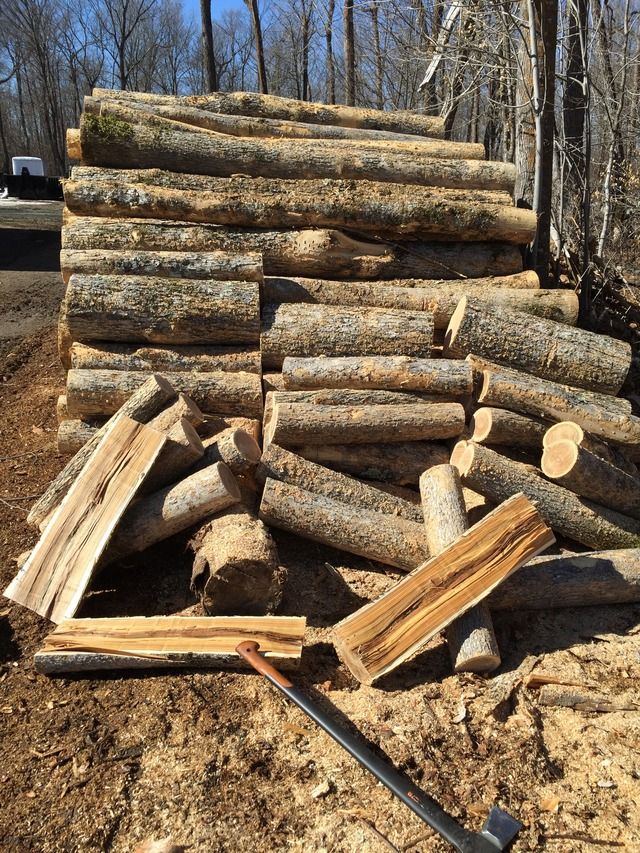So I thought I'd be the first to start a "how much have you burned" thread this spring. I figure it's close enough to spring, the ground frost has mostly gone out 'round here, and I just lit the fire for the first time in three days... I call that spring. I just measured and added it up; near as I can tell I'm a bit under 6 cord for the season. Even if we get a spell or two of cold weather I don't see me hittin' the 6½ cord mark... it can't get that cold this late??
Figurin' we started earlier than I ever remember, November and December were colder than "normal", January was warmer than "normal", February was near record cold, and we've had a warm spell here in March... well... I'm callin' it a "slightly-colder-than-normal" fall/winter (shrug). October 15 through March 15 we've had 6045 heating degree days... verses 6844 for last season... 4229 for the season before... 4833 before that... and 5576 for 2010/11. The truth is, I had to go back to 2008/09 before I found another 6000+ heating degree days for the same period (6145).
Also figurin' a pretty good chunk of what I burned wasn't of the best quality this year... well... heck... I'm damn happy with 6 cord heating 100% with wood. And other than a handful of mornings, the house was a nice even and constant 70°-71°... ya' sure can't kick that.
So... what's my point??
Well, I've got a bit over 5 cord of well-seasoned Bur Oak still stacked outside, and maybe a cord of elm... meaning, I'm still pretty much set for another winter
*
Figurin' we started earlier than I ever remember, November and December were colder than "normal", January was warmer than "normal", February was near record cold, and we've had a warm spell here in March... well... I'm callin' it a "slightly-colder-than-normal" fall/winter (shrug). October 15 through March 15 we've had 6045 heating degree days... verses 6844 for last season... 4229 for the season before... 4833 before that... and 5576 for 2010/11. The truth is, I had to go back to 2008/09 before I found another 6000+ heating degree days for the same period (6145).
Also figurin' a pretty good chunk of what I burned wasn't of the best quality this year... well... heck... I'm damn happy with 6 cord heating 100% with wood. And other than a handful of mornings, the house was a nice even and constant 70°-71°... ya' sure can't kick that.
So... what's my point??
Well, I've got a bit over 5 cord of well-seasoned Bur Oak still stacked outside, and maybe a cord of elm... meaning, I'm still pretty much set for another winter
*





